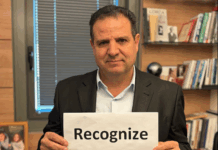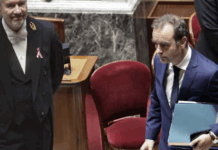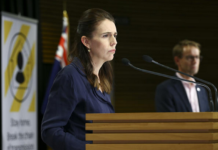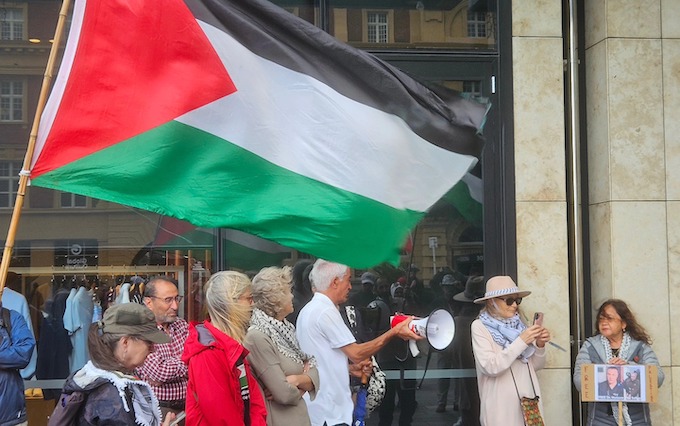
COMMENTARY: By Nour Odeh
There was faint hope that efforts to achieve a ceasefire deal in Gaza would succeed. That hope is now all but gone, offering 2.1 million tormented and starved Palestinians dismal prospects for the days and weeks ahead.
Last Saturday, the Israeli Prime Minister once again affirmed he had no intention to end the war. Benjamin Netanyahu wants what he calls “absolute victory” to achieve US President Donald Trump’s so-called vision for Gaza of ethnic cleansing and annexation.
To that end, Israel is weaponising food at a scale not seen before, including immediately after the October 7 attack by Hamas. It has not allowed any wheat, medicine boxes, or other vital aid into the Gaza Strip since 2 March.
- READ MORE: Open letter to Fijians – ‘why is our country supporting Israel’s heinous crimes in Gaza?’
- Gaza had educational justice. Now the genocide has wiped that out, too
- Other Israeli war on Gaza reports
This engineered starvation has pushed experts to warn that 1.1 million Palestinians face imminent famine.
Many believe this was Israel’s “maximum pressure” plan all along: massive force, starvation, and land grabs. It’s what the Israeli Minister of Defence, Israel Katz, referred to in March when he gave Palestinians in Gaza an ultimatum — surrender or die.
A month after breaking the ceasefire, Israel has converted nearly 70 percent of the tiny territory into no-go or forced displacement zones, including all of Rafah. It has also created a new so-called security corridor, where the illegal settlement of Morag once stood.
Israel is bombing the Palestinians it is starving while actively pushing them into a tiny strip of dunes along the coast.
Israel only interested in temporary ceasefire
This mentality informed the now failed ceasefire talks. Israel was only interested in a temporary ceasefire deal that would keep its troops in Gaza and see the release of half of the living Israeli captives.
In exchange, Israel reportedly offered to allow critically needed food and aid back into Gaza, which it is obliged to do as an occupying power, irrespective of a ceasefire agreement.
Israel also refused to commit to ending the war, just as it did in the Lebanon ceasefire agreement, while also demanding that Hamas disarm and agree to the exile of its prominent members from Gaza.
Disarming is a near-impossible demand in such a context, but this is not motivated by a preserved arsenal that Hamas wants to hold on to. Materially speaking, the armaments Israel wants Hamas to give up are inconsequential, except in how they relate to the group’s continued control over Gaza and its future role in Palestinian politics.
Symbolically, accepting the demand to lay down arms is a sign of surrender few Palestinians would support in a context devoid of a political horizon, or even the prospect of one.
While Israel has declared Hamas as an enemy that must be “annihilated”, the current right-wing government in Israel doesn’t want to deal with any Palestinian party or entity.
The famous “no Hamas-stan and no Fatah-stan” is not just a slogan in Israeli political thinking — it is the policy.
Golden opportunity for mass ethnic cleansing
This government senses a golden opportunity for the mass ethnic cleansing of Palestinians and the annexation of Gaza and the West Bank — and it aims to seize it.
Hamas’s chief negotiator Khalil al-Hayya recently said that the movement was done with partial deals. Hamas, he said, was willing to release all Israeli captives in exchange for ending the war and Israel’s full withdrawal from Gaza, as well as the release of an agreed-on number of Palestinian prisoners.
But the truth is, Hamas is running out of options.
Netanyahu does not consider releasing the remaining Israeli captives as a central goal. Hamas has no leverage and barely any allies left standing.
Hezbollah is out of the equation, facing geographic and political isolation, demands for disarmament, and the lethal Israeli targeting of its members.
Armed Iraqi groups have signalled their willingness to hand over weapons to the government in Baghdad in order not to be in the crosshairs of Washington or Tel Aviv.
Meanwhile, the Houthis in Yemen have sustained heavy losses from hundreds of massive US airstrikes. Despite their defiant tone, they cannot change the current dynamics.
Tehran distanced from Houthis
Finally, Iran is engaged in what it describes as positive dialogue with the Trump administration to avert a confrontation. To that end, Tehran has distanced itself from the Houthis and is welcoming the idea of US investment.
The so-called Arab plan for Gaza’s reconstruction also excludes any role for Hamas. While the mediators are pushing for a political formula that would not decisively erase Hamas from Palestinian politics, some Arab states would prefer such a scenario.
As these agendas and new realities play out, Gaza has been laid to waste. There is no food, no space, no hope. Only despair and growing anger.
This chapter of the genocide shows no sign of letting up, with Israel under no international pressure to cease the bombing and forced starvation of Gaza. Hamas remains defiant but has no significant leverage to wield.
In the absence of any viable Palestinian initiative that can rally international support around a different dialogue altogether about ending the war, intervention can only come from Washington, where the favoured solution is ethnic cleansing.
This is a dead-end road that pushes Palestinians into the abyss of annihilation, whether by death and starvation or political and material erasure through mass displacement.
Nour Odeh is a political analyst, public diplomacy consultant, and an award-winning journalist. She also reports for Al Jazeera. This article was first published by The New Arab and is republished under Creative Commons.



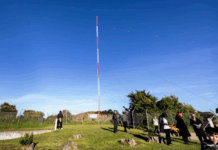
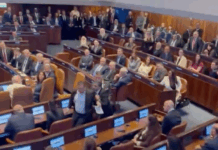



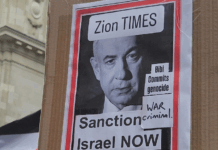
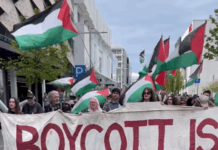

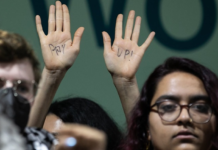

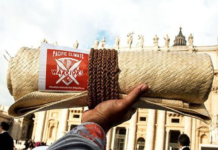


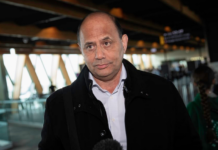













![Israeli historian Ilan Pappé: Despite ceasefire, Palestinians still face ‘elimination, genocide’ "My greatest worry is that [Netanyahu] does believe that his only chance of being reelected is still to have a war going on"](https://asiapacificreport.nz/wp-content/uploads/2025/10/Israel-on-the-brink-DN-680wide-218x150.png)
